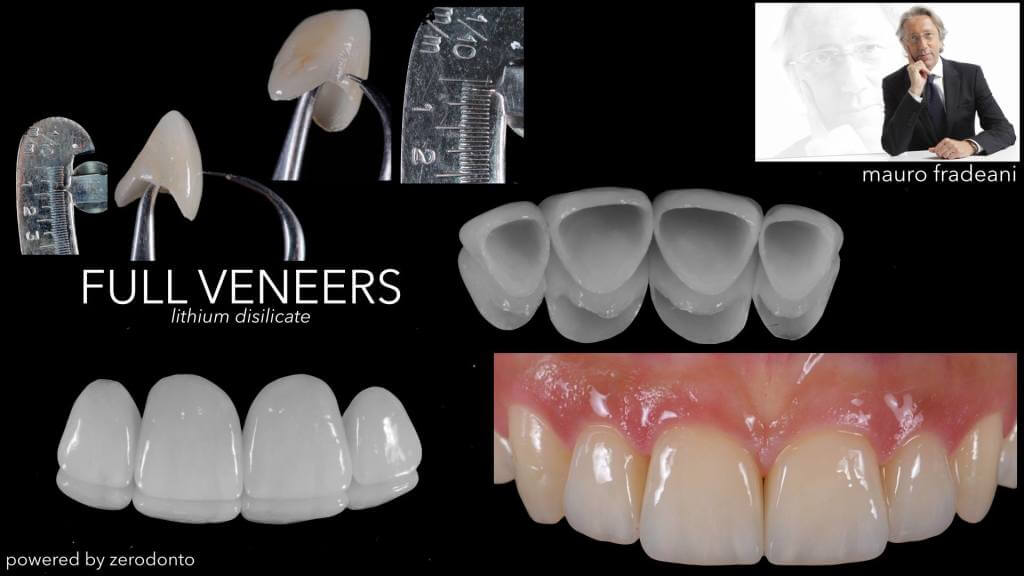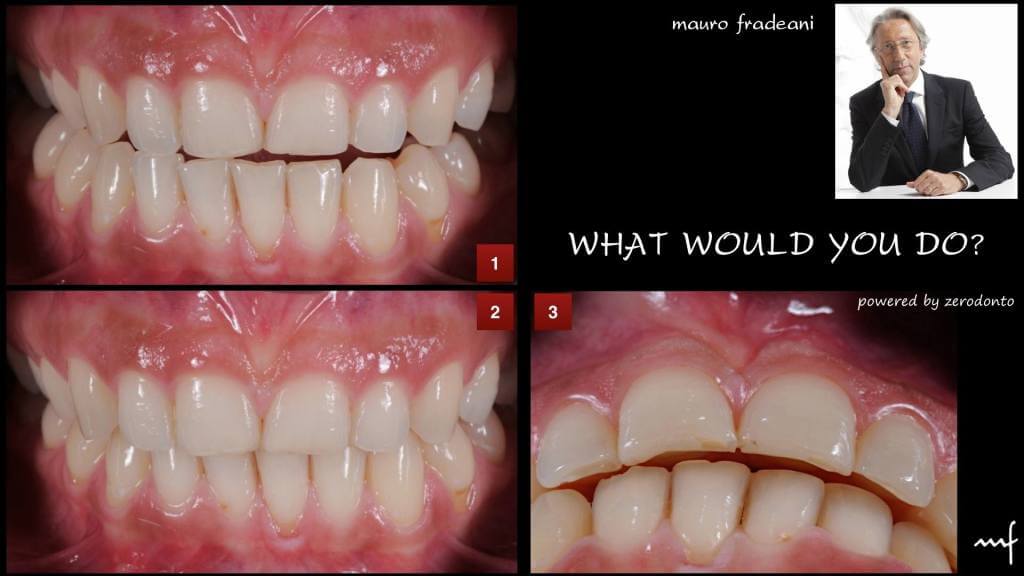Dear colleagues,
below a clinical case of minimally invasive prosthetic treatment presented by Dr. Mauro Fradeani.


Case presentation:
Fig 1 – Anna, 26 year-old. The patient complains about the reduced length of the maxillary incisors and asks for making better the esthetics of her front teeth.
Fig 2 – Sliding the mandible buccally, the patient notices that the mandibular incisors are longer than the maxillary ones; consequently, the necessity to lengthen the latter becomes even more evident. It is worth noticing how, in this position, the occlusal contacts occur mainly between the posterior teeth.
Fig 3 – The occlusal anterior view shows the lack of contact between the maxillary and mandibular incisors. Moreover, it is possible to notice how the incisal margins are affected by wear due to dental attrition caused by parafunctional activities during night.
Illustrations:

Fig.1 – The mock-up allows the patient to preview the length of the final restorations.
Fig. 2, 3 – After designing the buccal grooves to check the preparation depth, it is possible to notice how the preparation interested only the superficial enamel.

Fig. 4 – Four lithium disilicate full veneers were fabricated, with a thickness ranging from 0.2 to 0.8 mm.
_

Fig. 5 – A minimally invasive tooth preparation allowed to preserve the enamel thickness. The etching of enamel and lithium disilicate ceramics ensures an optimal mechanical resistance to the adhesive restorations also in the presence of very limited thicknesses.

Fig. 6 – The four final enamel bonded full veneers show a good esthetic and biological integration in comparison with the baseline.

Fig. 7 – Due to tooth lengthening and particularly to the palatal extension of tooth preparation, it was possible to achieve an optimal functional integration, as showed by the occlusal contacts on the maxillary incisors and the disclusion of the posterior areas.

Fig 8 – The protrusive and lateral movements show the disclusion of the posterior regions allowing the restoration of a correct occlusal function, that would have not been obtained by menas of traditional buccal veneers.
See photogallery on Facebook

